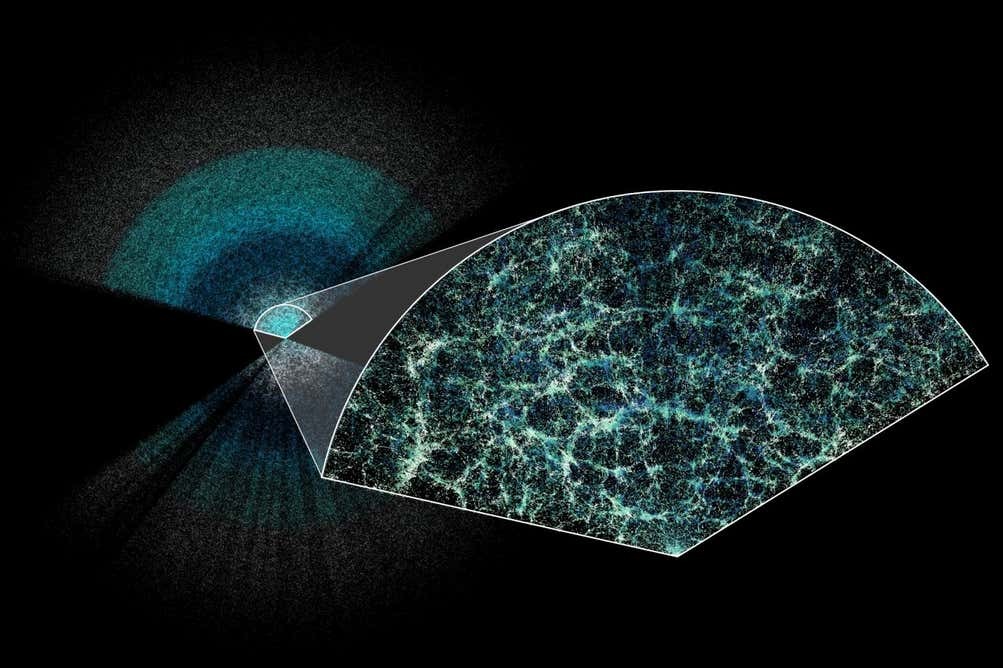The largest 3D map of the Universe ever created provides new data on its evolution, challenging our ideas about dark energy. It turns out that this mysterious power can weaken over time.

The largest 3D map of the universe ever created provides new data on its evolution, challenging our ideas about dark energy. “If it holds up, this is a very big deal. That is because the standard model of cosmology, called lambda-CDM, suggests that the strength of dark energy should be static over time.”
Dark energy, which is responsible for the accelerated expansion of the Universe. If it changes, it could affect our ideas about the origin, size, and future of the cosmos. Riess adds that this will force us to rethink our understanding of gravity.
The new findings come from the Dark Energy Spectroscopic Instrument (DESI) in Arizona. DESI measured the large-scale structure and distribution of galaxies to learn how the universe expanded. The researchers combined this data with three sets of supernovae data used to determine distances to cosmic objects. The findings on dark energy attenuation have been so contradictory that even DESI members aren’t sure what to make of them.
Each of the three sets of supernovae gave different results for the change in the expansion rate of the universe. All three suggested that the impact of dark energy may have diminished in recent eons, but confidence varied, so the researchers are unsure how to interpret the data.
“Two of the supernova samples disagree with each other. It’s possible that the truth lies in between, but it really looks like the differences lie in the way [the supernova researchers] evaluated the data,” says Dawson.
Discrepancies in the models are denoted by the sigma coefficient, which measures the probability of a random match. “About 3-sigma is the level we usually sit up and pay attention and call an ‘indication’ of something. The discrepancies between lambda-CDM and the combination of supernova and DESI measurements ranged from 2.5-sigma to 3.9-sigma. That’s a pretty wide discrepancy,” says Riess.
Dark energy makes up almost 70% of the universe, so any error in our understanding of its nature could have significant implications for physics. More precise measurements are needed in the coming years to confirm or disprove.
“If [this is] true, it would be the first real clue we have gotten about the nature of dark energy in 25 years,” says Riess.
We previously reported on how artificial intelligence helped us understand dark energy more accurately.
According to newscientist.com


